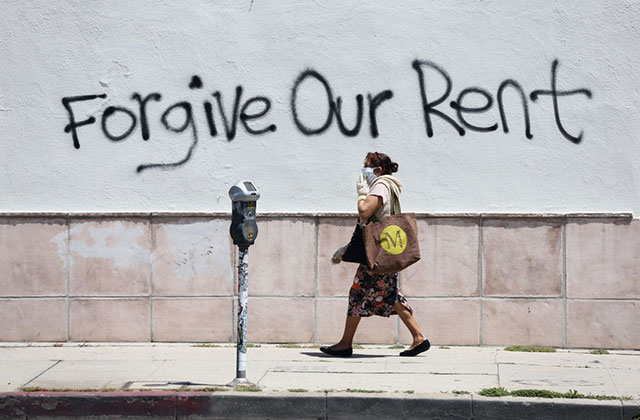Many New Yorkers may remember Jimmy McMillan in 2010 when he ran for governor under the "Rent is too damn high" slogan. Fast forward a decade and a new “Out of Reach 2020” report, published by the National Low Income Housing Coalition (NLIHC), confirmed that rent for a two-bedroom apartment is unaffordable in every state for a person working full-time on minimum wage, proving that McMillan was right. Affordable one-bedrooms fare slightly better with only 145 counties in the country offering rentals that a full-time worker on minimum wage can afford.
The 30-year annual report creates a Housing Wage that generates an hourly wage estimate for how much a full-time worker must earn to afford a rental home in the U.S. Department of Housing and Urban Development’s (HUD) fair market rent (FMR), without spending more than 30 percent of their income.
NLIHC instead found that a person working a full-time job has to earn a minimum of $23.96 per hour to rent a two-bedroom on average; $16.71 more than the federal minimum wage of $7.25, and $5.74 higher than the national average of $18.22 per hour earned by renters. In 11 states and Washington, D.C., the two-bedroom Housing Wage is still out of reach at more than $25.00 per hour.
The study, which had data on renters before the pandemic struck, noted that 25 percent of all and 71 percent of “extremely low-income renters” are putting more than half of their incomes into housing, leaving them vulnerable to evictions if an emergency arises. Since the COVID-19 crisis took hold, NLIHC said that millions of people are now threatened with homelessness.
See additional highlights below:
- rnt
- The average minimum wage worker must work nearly 97 hours per week (more than two full-time jobs) to afford a two-bedroom rental home or 79 hours per week (almost exactly two full-time jobs) to afford a one-bedroom rental home at fair market rent.
- People who work 97 hours per week and need 8 hours per day of sleep have fewer than 2.5 hours per day left over for everything else—commuting, cooking, cleaning, self-care, caring for children and family, and serving their community. Doing so is an impossibility for a single parent who needs a larger-than-one-bedroom apartment.
- A modest one-bedroom rental home is unaffordable to more than 40 percent of wage earners. A modest two-bedroom rental home is unaffordable for more than 60 percent of wage earners.
rnt
rnt
rn
Lending voice to the preface of NLIHC’s report, Senator Sherrod Brown (D-Ohio) writes:
First, we must make sure that we do not emerge from the current crisis with greater racial and wealth inequality than we began with. Congress must provide emergency rental and mortgage assistance to prevent a wave of evictions and foreclosures that will set millions of people back and compound inequality.
Next, we must close the gap between income and housing by paying workers a living wage, and investing in affordable housing, particularly for the lowest-income households. Housing poverty and unaffordable rents leave too many of our families vulnerable to everyday emergencies like a broken down car–let alone a natural disaster or global pandemic. The country must take action to preserve and create housing affordable and accessible to everyone, and ensure that all neighborhoods are neighborhoods of opportunity.
Brown introduced the Emergency Rental Assistance and Rental Market Stabilization Act of 2020 in May, which would "authorize $100 billion for an Emergency Rental Assistance program to help families and individuals pay their rent and utility bills and remain stably housed during and after the COVID-19 crisis," according to the U.S. House Committee on Financial Services.
To read the full report, visit “Out of Reach 2020” here.
